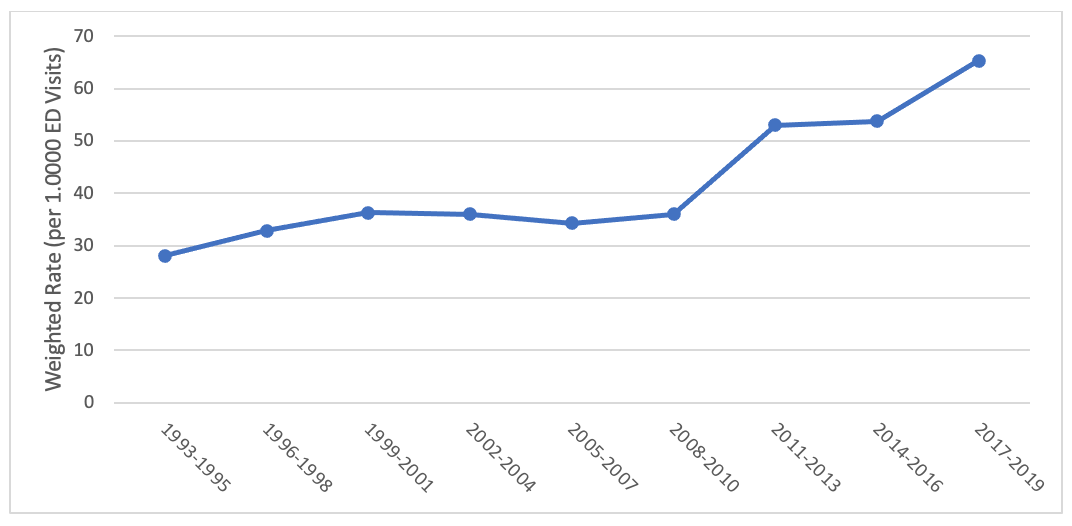Emergency Medicine: All Areas
Emergency Medicine 2
42 - Trends in Emergency Department Visits for Bronchiolitis, 1993-2019
Publication Number: 42.111
.jpg)
Kathleen D. Snow, MD (she/her/hers)
Clinical Fellow
Boston Children's Hospital
Boston, Massachusetts, United States
Presenting Author(s)
Background:
Bronchiolitis is the most common lower acute respiratory infection in children age < 2 years. Bronchiolitis symptoms are typically mild, but severe cases may necessitate emergency care. Emergency department (ED) visit rates for bronchiolitis from 1992-2010 were mostly stable. However, more recent pre-COVID trends suggest increasing bronchiolitis hospitalizations at tertiary children’s hospitals.
Objective: To provide a comprehensive review of national trends and epidemiology of ED visits for bronchiolitis from 1993 to 2019 in the U.S.
Design/Methods: We performed a serial cross-sectional analysis of ED visits for bronchiolitis for children age < 2 years using the 1993-2019 National Hospital Ambulatory Medical Care Survey (NHAMCS). Bronchiolitis cases were identified using International Classification of Diseases (ICD), Ninth Revision, Clinical Modification 466.x code or ICD, Tenth Revision, Clinical Modification J21.x code in any of the diagnosis fields. The primary outcome was bronchiolitis ED visits, calculated using NHAMCS-assigned patient visit weights. We then evaluated for temporal variation in patient characteristics, facility location, and hospitalizations among the bronchiolitis ED visits.
Results:
Between 1993 and 2019, there were an estimated 8 million ED visits for bronchiolitis, accounting for approximately 4% of the 189 million ED visits by children age < 2 years. Bronchiolitis ED visits remained relatively stable from 1993 to 2010 (28-36 per 1000 ED visits) but increased significantly to 65 per 1000 ED visits by 2017-2019 (p< 0.001). There was no significant change over time in patient’s age, sex, race and ethnicity, insurance status or triage level upon ED presentation. The location of ED visit (urban vs. rural, US region, and pediatric vs. general ED) has also remained consistent. Over half (50-53%) of bronchiolitis ED visits occurred in the winter months and approximately 11-20% of patients were hospitalized. While hospitalization rates remained stable, the absolute number of hospitalizations increased in proportion to increasing overall ED visit volume.
Conclusion(s): Although rates of ED visits for bronchiolitis were stable from 1993-2010, they have almost doubled over the past 10 years with no associated changes in patient demographics, location of presentation, seasonality, or hospitalization rates. These 27-year trends highlight the significant increase in ED volume over the past decade without evidence of increasing disease severity requiring hospitalization and provide context for future work on bronchiolitis trends during and after the COVID-19 pandemic. 
.png)
